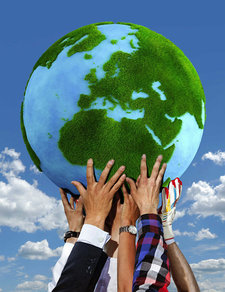 "Grasses are the greatest single source of wealth in the world."
"Grasses are the greatest single source of wealth in the world."
- Agnes Chase, First Book of Grasses (1959)
"Grass is that indispensable form of plant life without which civilization, as we know it, would not exist."
- Sellers Archer & Clarence Bunch, The American Grass Book (1953)
Grass has several functions. We cannot digest it and yet it is one of the most important resources for our food production: animals eat grass and we eat animal products such as meat, eggs and milk. Furthermore, we also use grass in other ways: for sport, recreation and to brighten up gardens and public spaces. This plant also has important ecological functions: it protects against soil erosion, it absorbs water, it purifies the air we breathe and so on.
Every variety of grass has its own special properties. The grass family, or Graminae, has about 8,000 varieties. There are suitable varieties of grass for cultivation at almost every temperature and every amount of rainfall. Some grasses can thrive during extreme drought because they have very long roots which can extract water from deep under the ground. Other sorts can flourish in extreme cold or withstand long periods of rain.
Most people take grass for granted but we shouldn't forget that grass plays a very important role in our lives. Scientists all over the world are working on research, improvement, breeding and cultivation of this very important crop. Barenbrug does this, too. But that isn't all that we do. We have the entire process at our fingertips: everything from the breeding and the cultivation of grass seed to production and sales.


 "Grasses are the greatest single source of wealth in the world."
"Grasses are the greatest single source of wealth in the world."